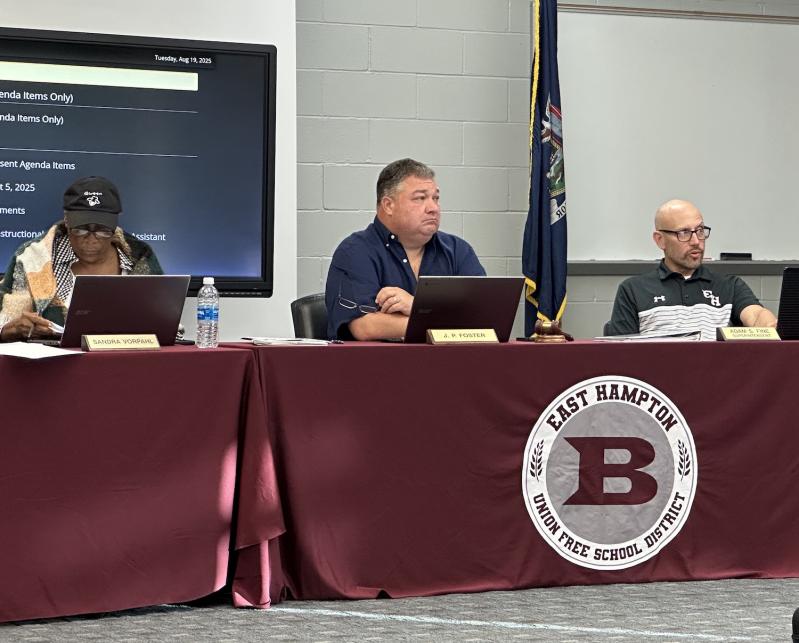It will be up to the community which projects rise to the top of the list as the East Hampton School District begins to firm up plans for a bond referendum of more than $60 million it will put on the May 2026 ballot, and on Tuesday night the superintendent, Adam Fine, announced four workshops designed to gather that input over the next few months.
“A list exists,” Mr. Fine told the board on Tuesday night. “It is by no means definitive.”
As he told The Star two weeks ago, he has been writing down everything people have suggested over the years, from additional turf playing fields to lighting for sports fields to a pool to renovated auditoriums.
“There are certain things that need to be done,” like replacing windows, he told the board, but “this is the next 20 years for the school district, so we can’t miss the big ticket items.”
Debt payments for the $76.2 million renovation and expansion bond voters approved in 2006 will soon be retired, and next year is the time to bond again without an impact on taxes, said Sam Schneider, the assistant superintendent for business. “We borrow in stages so the amount we’re borrowing matches the debt we’re retiring. . . . As debt retires over the course of three years, we’re going to be staging projects to start over three years.”
Mr. Schneider will explain all of this at the community meetings, the first of which will be held on Sept. 25 at 6 p.m. in the high school library. Subsequent meetings are planned for the same time and place on Oct. 15, Nov. 12, and Dec. 17.
The main thrust of the meetings will be to hear what improvements district residents most want to see at the district’s three schools. “No decisions have been made as to what’s going to be included,” Mr. Schneider said.
The administration hopes to hear from current high school students, even though the work would likely be completed after they graduate, and from its youngest students. Given the timeline for capital projects like this, it would be today’s elementary students who would most benefit from any work done, J.P. Foster, the board’s president, pointed out.
Turning to the president of the high school student administration, Stella Brecker, a senior who was attending her second meeting as an ex-officio board member, he asked, “What did you guys miss? You won’t get the benefit from it . . . but if there’s something that the students who are here currently say, ‘Hey, I wish we had X,’ “ the administration wants to hear about it.
Capital construction “takes a long time,” Mr. Schneider said.
With comment from the community, the district will be in the “project development” phase through December. After that, it will put together a “conceptual package” that would be put to voters in the spring. The package has to be accompanied by a statement of its potential environmental impacts, as required by the State Environmental Quality Review Act, and because of the time it takes to prepare that, district officials will have a “last opportunity to make minor adjustments” in early February, Mr. Schneider said. The SEQRA statement has to be adopted by March 3. “That’s the drop-dead deadline for getting it on the May ballot.”
“When we design things for presentation to voters, we’re looking at general concepts,” Mr. Schneider said. The real design work begins after a bond is approved by voters, and could take from “June to December [2026] and beyond.” Ultimately, projects must be approved by the New York State Education Department, which requires a detailed project manual covering every aspect of construction.
“Once it gets to S.E.D., it’s out of your control,” Mr. Schneider said. A timeline for approval depends on how many other projects are in front of the department. The district puts the project out for bidding after it gets the state permits, but there are relatively few contractors capable of taking on projects of this sort. “Because we pay after we do the work, they have to be able to float the cash to their suppliers and to their employees and to their insurance companies,” Mr. Schneider said. With bids in hand, district officials will then review each “to make sure the contractor fully understands the job,” and ultimately the board will be asked to award the contract.
Before all that, however, “we can’t stress enough how much it will be good to get some public input and public response,” Mr. Foster said.

